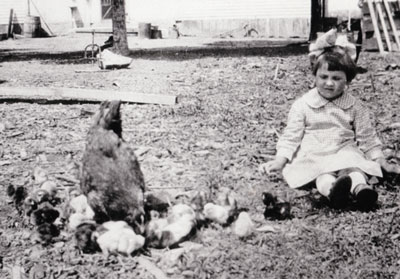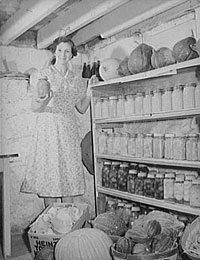|
 |
|
How does the lowly chicken help us rethink farm life? Because, I suggest, modernity entailed not only a reorganization of economic relationships but also a reorganization of all aspects of daily life and, with that, of identities. And no arena of identity transformation is more intimate or more fraught than that of gender.
We already have clues: Through engagement with the market, Jensen argued, women "loosened the bonds" of patriarchy. Through buying labor-saving and non-utilitarian, "symbolic" goods, women linked themselves and their families (especially their children) to a practical and symbolic universe denoting the future -- a future that was "modern." And through their deep involvement in revivalistic religions, and their energetic debates concerning the nature of sin and redemption (a topic far too little investigated in historical studies, but better studied by anthropologists (see, e.g., Kenhelm Burridge 1969), contributed to the creation of gender identities that claimed independence from patriarchal controls and that were open to both industrial and consumer orders.
These engagements with modernity were, inevitably, subject to negotiation with others equally in motion; in the United States from the late nineteenth century forward, farmers appear relatively less powerful than, say, the robber barons and the associated and supporting capitalist and intellectual elites. And "farmers" were anything but a unified group. They were distinguished by region, by ethnicity and religion, by race, and by class. They were also divided, in ethnically and religiously shaped but often unpredictable and idiosyncratic ways, regarding their ambitions for themselves and their children. They were unified by being participants in larger commodity markets, subject to national laws, and integral members of the larger culture.
|
|
 |
|
|
"Modernity" and U.S. farm women's poultry operations: farm women nourish the industrializing cities 1880-1940. Paper presented at the international conference, The Chicken: Its Biological, Social, Cultural, and Industrial History: From Neolithic Middens to McNuggets. May 17-19, 2002, Yale University, Program in Agrarian Studies. © Jane Adams 2002
Jane Adams' Home Page
|
|
|
|
|
|

